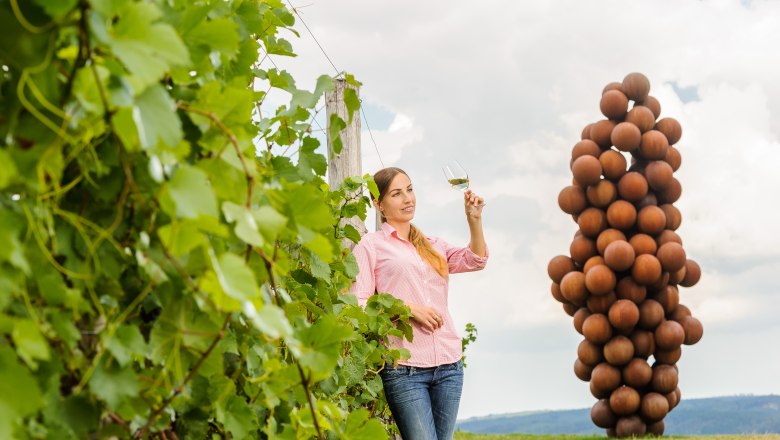Breathing in the countryside
The term cultural landscape has gained a brand new meaning in Lower Austria. Artistic objects everywhere create a special connection with nature.
Everywhere can be a setting for art! Take an outing in the idyllic location of Lower Austria to experience this yourself. Whether in Weinberg, on the banks of the Danube or at the foot of the Semmering mountain – prominent art projects across the state surrounding Vienna are taking over the countryside.
Goethe once wrote, ‘Nature and art, they seem to shun each other/Yet in a instant can draw back close once more’. This insight is beautifully reflected in Lower Austria, where a huge range of art projects decorate fields, riverbanks and vineyards.
The nose and the wine
An impressive ‘Untitled sculpture 2005’ by Heimo Zobernig greets visitors to Kamptal. The seven-metre high sculpture made from 130 steel spheres is affectionately known as the ‘grapes on the Käferberg hills’ by locals. The Wachauer Nase at the ferry stop in St. Lorenz is a landmark in the UNESCO World Heritage Region, created by the Gelitin group of artists. You can step into the nostrils of the four-metre high concrete installation.
The sundial and the Ötscher bear
A gigantic, yellow wheel can be found near to the village of Hetzmannsdoft in the hilly Weinviertel. It is a construction made from iron, wood and aluminium sheets, weighing 2,500 kg. It was created by the artist Gerhard Kohlbauer, who was inspired by the idea of archaic sun dials. Meet a metal sculpture of a brown bear in Naturpark Ötscher-Tormäuer country park. The art is designed to raise awareness that it is thanks to Ötscherbären, a brown bear from Slovenia that ventured into the Ötscher mountain area, that the brown bear could resettle in the Northern Lime Alps.
Art in the landscape in Gut Gasteil
The artistic couple of Charlotte and Johannes Seidl exhibit many artworks in the countryside. These pieces contrast with the idyllic location in the pre-alpine landscape on the 16-hectare site of Gut Gasteil in Prigglitz. Visitors can walk the mown trails around the constantly changing exhibition in approx. one and a half hours.


